Exotic Pet Care
We love exotics! Reptiles, birds and small mammals of all sorts are warmly welcomed at Acadia Veterinary Clinic. We are proud to offer complete medical, dental and surgical care for your exotic pets.
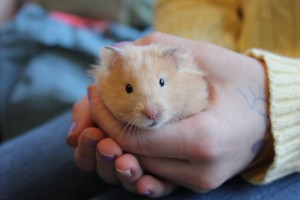
Ferrets
You can help keep your ferret healthy by bringing him or her in for an exam once a year. That way, the Veterinarians at Acadia can monitor any changes that occur in your pet and help prevent or catch diseases early, when they’re easier to treat.
As ferrets age, they may need additional testing and dental care such as extractions and tartar removal.
Common problems associated with ferrets include gastrointestinal disease, parasites, and cancer. In addition, ferrets are inquisitive creatures by nature and frequently ingest objects they shouldn’t. Regular blood tests can help determine whether your ferret has any problems with the kidneys, liver, or pancreas.
Ferrets can also benefit from receiving certain vaccinations and monthly preventives, which we can discuss with you during your visit. Please bring a stool sample to your ferret’s annual exam so we can test for internal parasites.
Please contact us if your ferret develops any unusual symptoms, such as vomiting, diarrhea, hair loss, lack of appetite, trouble breathing, black ear wax, discharge from the eyes or nose, lumps, swelling, or an increase in aggression or sexual behavior (especially in neutered males).Unless you are planning to breed your ferret, we recommend that he or she be spayed or neutered. Female ferrets, or jills, do not need to give birth once to stay healthy. In fact, spaying can save a ferret’s life. Jills that haven’t been spayed will stay in heat until they’re bred. This condition can cause anemia (a decrease in red blood cells), which can be fatal. In male ferrets, neutering can reduce their strong body odor, prevent marking, and reduce aggressive behavior.

Reptiles
Like all pets, reptiles should be examined at least annually. If you have just purchased a new pet reptile it is important that they are examined by a qualified veterinarian. The visit includes determining the animal’s weight, as well as thorough physical examination. The animal is examined for signs of dehydration, malnutrition, or other abnormalities. The oral cavity is examined for signs of infectious stomatitis (mouth rot). Your veterinarian may recommend cultures, or radiographs (X-rays) to check for other diseases. No vaccines are required for pet reptiles in Saskatchewan.
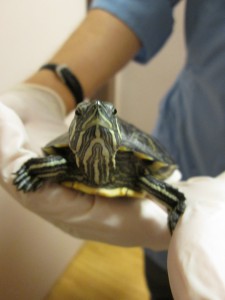
Physical Examination
Every visit starts with a thorough physical examination. During the physical, the veterinarian will record your pet’s weight, general appearance, and mobility. An updated history will be taken, and your reptile’s diet will be evaluated. The veterinarian will palpate (feel) various parts of the pet’s body. Any abnormalities that are noted or changes that have occurred since the previous visit may indicate the need for specialized testing.
More commonly, signs of illness are non-specific, such as a lizard with anorexia (lack of appetite) and lethargy, which can be seen with many diseases. ANY deviation from normal is a cause for concern, and your pet turtle requires immediate evaluation by your veterinarian

Bearded Dragons
Bearded Dragons are popular, well-known lizards and are currently considered one of the best pet lizards. There are eight species of Bearded Dragons, but the most popular one is the Inland or Central Bearded Dragon (Pogona vitticeps), from the arid to semi-arid southeastern parts of Australia and this species is the one that will be mainly be discussed in this handout.
Owners often refer to them as “beardies.” They are attractive, heavy-bodied lizards with flattened bodies and broad triangular heads. They have a spiny pouch (or beard) under their chin or jawbone that can be expanded when they are threatened or are aroused during mating. The pouch will also turn black when aroused. They have a characteristic series of spines projecting horizontally from the sides of the body, running from the head to the base of the tail. Full-grown, healthy adults can reach 18-22 inches (45-56 cm) from the tip of the nose to the end of the tail.
“They have a spiny pouch (or beard) under their chin or jawbone that can be expanded when they are threatened or are aroused during mating.”
Sexing a baby Bearded Dragon is very challenging. In the adult, the male has larger femoral pores (used for scent marking), which are located on the underside of the thighs just in front of the vent. The males are slightly larger than the females, have a larger head, and darker “beard.” There are many color variations, both naturally and selectively bred, including light tan, dark brown, or slightly green, with highlights of black, red, orange, or gold. The young are semi-arboreal (live in trees), and the adults are mostly terrestrial, occasionally climbing to bask or search for prey. Bearded dragons live about 7-12 years if properly looked after.
This lizard is omnivorous, which means that they eat both plant and animal-based foods. Bearded dragons have a behavior unique to them called arm waving, a term that describes what it actually looks like. They lift up one arm slowly and then slowly place it down again. A slow head bob often accompanies the wave. The purpose of this action is not entirely understood, but it is believed to be a form of communication, possibly indicating submission to a larger or more dominant animal.
They are highly social, friendly, animated, curious, docile, and gentle animals that are easy to tame and are very responsive to their owners. Bearded dragons are hardy, robust, eat well, and have a flexible diet. Bearded dragons can make great pets if cared for properly. Please do your “homework” and research as much as possible about this type of pet before bringing it into your life. They are suitable as pets for children if they are properly supervised.
How do bearded dragons differ from other pets?
- Bearded Dragons do not have diaphragms; they use muscles located between their ribs (intercostal muscles) for breathing.
- Bearded Dragons have a three-chambered heart; dogs, cats, and people have four chambers in their hearts.
- Bearded Dragons have a renal portal blood system, which means that blood from the hind limbs is filtered by the kidneys before reaching the general circulation. This means toxins from the rear limbs (as could occur from wounds on the legs) as well as drugs injected into the rear legs would probably be filtered through the kidneys before entering the general circulation.
- Bearded Dragons excrete uric acid (the white portion of their excretion) as the main waste product of protein metabolism (dogs, cats, and people excrete liquid urea). This allows them to adapt to desert environments, where water supply might be restricted.
- Males have two reproductive organs called hemipenes.
- More than one Bearded Dragon can be kept in a cage (as long as it is big enough), but only one adult male should be present. Adult females may become aggressive.
- Bearded Dragons have a cloaca, which is a reservoir for secretions from the urinary, gastrointestinal, and reproductive systems; the cloaca exits externally through the vent, located on the ventral or undersurface, between the back legs.
- The skin is covered with scales and is usually shed in patches as they grow, unlike snakes, where the skin is usually shed in one piece.
- Bearded Dragons explore their environment by flicking out the tongue and licking or tongue-testing with a light touch of the tongue. This is like “sniffing” and is a sensory function
Iguanas
With proper care, your iguana can live 10-15 years, although 25 years has been reported. When young, they are bright green in color; their color gradually fades to brown, dull orange, or grayish-green as they reach adulthood. Iguanas are usually fairly docile and harmless but can cause severe scratches with their long claws. If not socialized well or wild-caught, some individuals (especially sexually mature males) may be very aggressive and territorial and, if they are provoked, have a nasty, painful, damaging bite. Iguanas are NOT suitable pets for young children or young teenagers. They do not make appropriate “family” pets. They are better suited for the skilled, knowledgeable reptile enthusiast.
How do iguanas differ from other pets?
- Iguanas do not have diaphragms; they use muscles located between their ribs (intercostal muscles) for breathing.
- Iguanas have a three-chambered heart; dogs, cats, and people have four chambers in their hearts.
- Iguana’s tails will break off if roughly handled. They do slowly grow back again, but with a duller color.
- Iguanas have a renal portal blood system, where blood from the hind limbs is filtered by the kidneys before reaching the general circulation. This means toxins from the rear limbs (as could occur from wounds on the legs), as well as drugs injected into the rear legs, would probably be filtered before entering the general circulation.
- Iguanas excrete uric acid (the white portion of their excretions) as their main waste product of protein metabolism (dogs, cats, and people excrete urea). This allows them to adapt to desert environments where water supply might be restricted.
- Males have two reproductive organs called hemipenes.
- Iguanas have a cloaca, which receives secretions from the urinary, gastrointestinal, and reproductive systems. The external opening of the cloaca is the vent, located on the ventral or under the surface between the back legs.
- The skin is covered with scales and is usually shed in patches as the iguana grows, unlike snakes where the skin is usually shed in one piece.
- Unlike many reptiles, iguanas have a urinary bladder.
- Iguanas explore their environment by flicking out the tongue and licking or tongue-testing with a light touch of the tongue. This is like “sniffing” and is a sensory function.
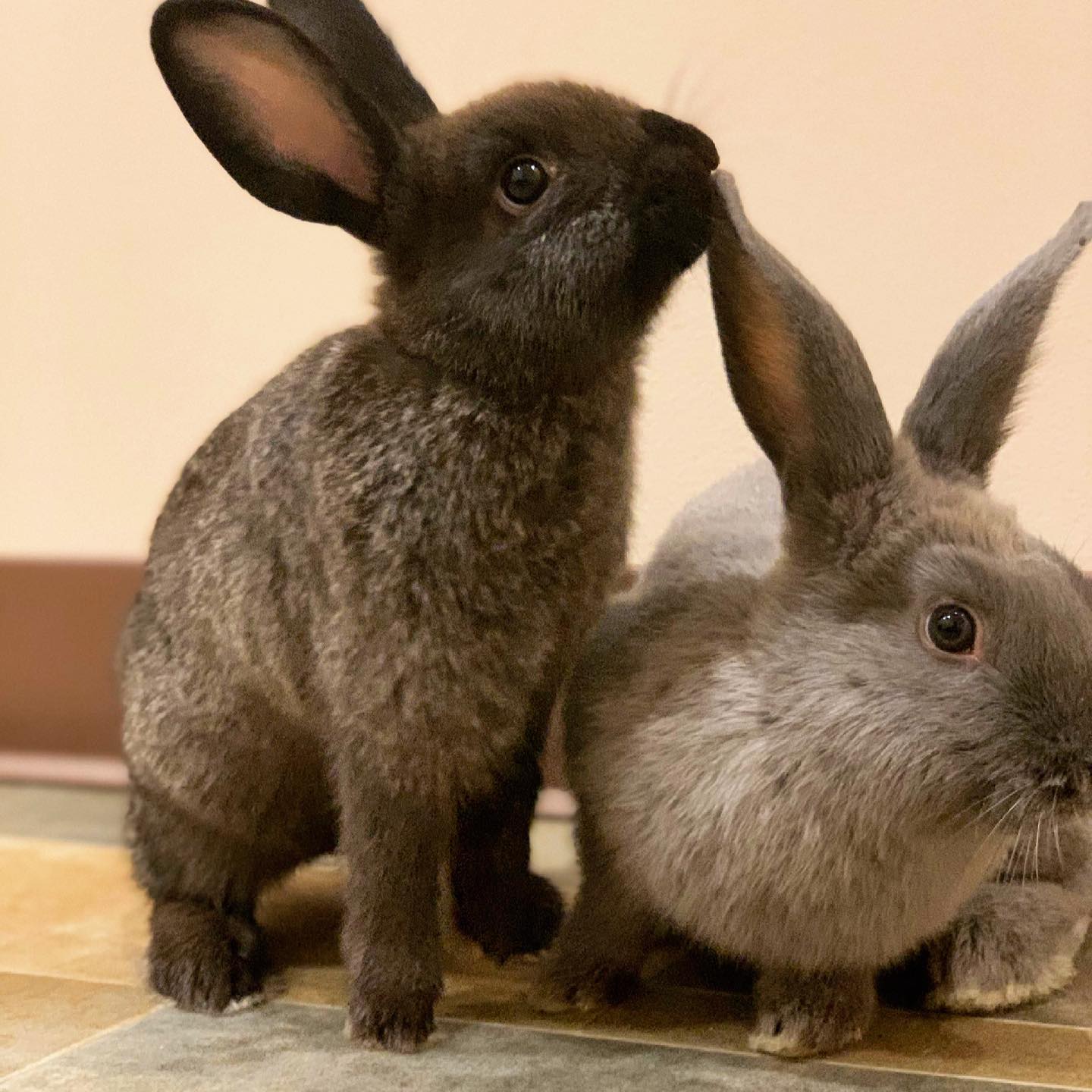
Rabbits
Common conditions of pet rabbits include snuffles, internal and external parasites, overgrown incisors, uterine problems (infections or cancer), and sore hocks. They also tend to hide signs of illness or pain very well, which makes it difficult to tell when your rabbit isn’t feeling well. The Veterinarians and Veterinary staff at Acadia can help you identify what is normal and what is not when it comes to your rabbit’s health.
What are the signs of these diseases?
“Snuffles” is the lay term given to an infection of the upper respiratory tract generally caused by species of bacteria called Pasteurella multocida. (although other bacteria can also cause this infection). Most commonly, clinical signs are related to the eyes (mucoid or purulent discharge, redness, squinting) or nose and sinuses (sneezing, mucoid or purulent discharge). Often the eyes and nose are affected at the same time. Crusty, matted fur is often seen on the inside of the front paws. Pasteurella multocida can infect other areas of the body as well. Ear infections (resulting in a head tilt), abscesses (seen as lumps on the body), and uterine infections (often only diagnosed during exploratory surgery) are frequently seen. Sudden death from septicemia (infection in the blood) is rare but can occur.
Rabbits can become infected with various intestinal parasites (coccidia and pinworms are common), as well as external parasites such as ear and fur mites, fleas, and occasionally ticks. Regular examinations, including microscopic fecal examinations (at least once a year), will allow easy diagnosis and treatment.
A rabbit’s teeth are continuously growing, but the daily act of chewing food as well as chewing on wooden blocks, branches, and toys helps them wear down at a rate equal to their growth. Regular chewing exercise keeps the teeth at a consistent normal, functional length. Occasionally, trauma or disease will change the way the teeth grow, and they will become overgrown. Both the molars and the incisors (the big teeth you can see at the front of the mouth) can be affected, but the incisors are more often the problem. Rabbits with overgrown teeth may stop eating and drool excessively. You can easily detect a problem with the incisors by looking into the rabbit’s mouth. A veterinarian familiar with rabbits will have to assess the molars, which are further back in the mouth.
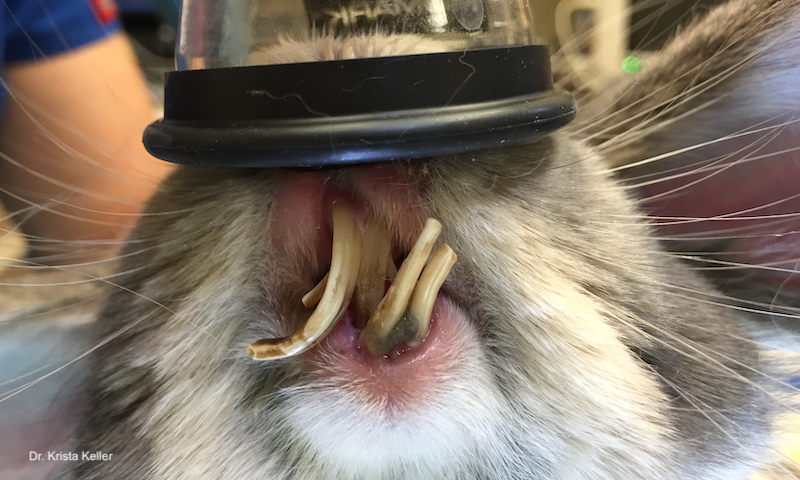
Like dogs and cats, female rabbits should be spayed early in life (by 4-6 months of age). Unspayed female dogs and cats often develop malignant breast cancer, un-spayed female ferrets can die of fatal anemia, while un-spayed female rabbits often develop uterine cancer. This type of cancer is called uterine adenocarcinoma and is a relatively common condition of older intact female rabbits. It should be suspected anytime an un-spayed female rabbit becomes sick or is passing blood. Diagnosis is difficult and often only made definitively during exploratory surgery.
How can I tell if my rabbit is sick?
Some signs of disease in rabbits may be specific for a certain disease. More commonly, however, signs are vague and non-specific, such as a rabbit with anorexia (lack of appetite) and lethargy, which can be seen with many diseases, including hairballs, uterine cancer, and even kidney or liver failure.
You should be concerned if you notice ANY deviation from normal and should immediately take your rabbit to your veterinarian for an evaluation. If a rabbit misses even one meal this is a cause for concern and should be promptly investigated.
It is imperative that your rabbit is on a proper diet so that it can properly wear down its teeth while chewing. Overgrown incisors should be shortened or trimmed; this usually needs to be done regularly as the teeth continue growing. Our veterinarians use dental burrs on dental drills to file down the incisors, often under anesthesia. Treating poorly aligned molar teeth can be more challenging, but filing rather than clipping is considered optimal today. If a particular rabbit is having recurrent dental problems, one long-term solution is to remove the affected upper and lower incisors or the affected molars. This procedure may be simple or complex, depending on the tooth, its location in the mouth and its condition. Although it sounds drastic, it is without doubt the best long-term solution to the problem if chronic overgrowth occurs. Overgrown teeth can sometimes puncture your rabbit’s cheeks and cause swelling and sometimes an infection.
Contact us if your rabbit:
- Has discharge from the eyes or nose, runny stool, or a gurgling stomach
- Has an elevated or low temperature
- Begins drooling, scratching at the ears, or sneezing
- Starts tilting his or her head
- Develops bald patches in his or her fur
- Stops eating, appears quieter than normal, or shows other abnormal behavior
In addition, your rabbit can benefit from regular dental checkups. We can help make sure problems with your rabbit’s teeth don’t turn into serious, potentially life-threatening conditions.
We strongly suggest that you have your rabbit spayed or neutered. Not only can rabbits theoretically give birth once a month, but they can also have up to 14 babies at a time! Even in households with a single rabbit, spaying or neutering has benefits: It can protect your rabbit from several types of cancer and reduce or eliminate aggression, as well as other undesirable behavior, such as spraying, mounting, destructive chewing, and biting. Spaying or neutering will not change your rabbit’s personality.
Hedgehogs
With pet hedgehogs, the food often has to be rationed to prevent obesity. Inappropriate or imbalanced diets may lead to obesity and malnutrition. One sure sign that your hedgehog is too fat is when it balls up, you can still see the face, ears, or feet. Normally, a balled-up hedgehog is completely enclosed by its’ spines. Cancer is very prevalent in hedgehogs, especially those over 3 years old. Tumors have been reported in all body organs in hedgehogs but are especially common in the mouth and gastrointestinal tract. Hedgehogs are also prone to illnesses involving the eyes and teeth. Signs of disease in rodents are sometimes specific to a certain disease. Most commonly, however, signs are vague and non-specific, such as a rodent with anorexia (lack of appetite) and lethargy, which can be seen with many diseases, including pneumonia, cancer, and even kidney or liver failure.
Rodents
Our veterinarians are knowledgeable about the many types of pet rodents, including hamsters, mice, chinchillas, rats, and we are always happy to answer any questions about your pet’s health and well-being.
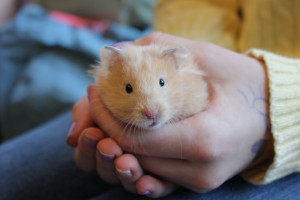
Parasites such as lice, mites, and fleas can infest your pet which requires treatment, and their nails can cause them discomfort if they become over-grown and curl into the pads of the feet. Our veterinarians can prescribe the appropriate medication to effectively treat your pet’s parasites, and our skilled technicians can trim over-grown nails.
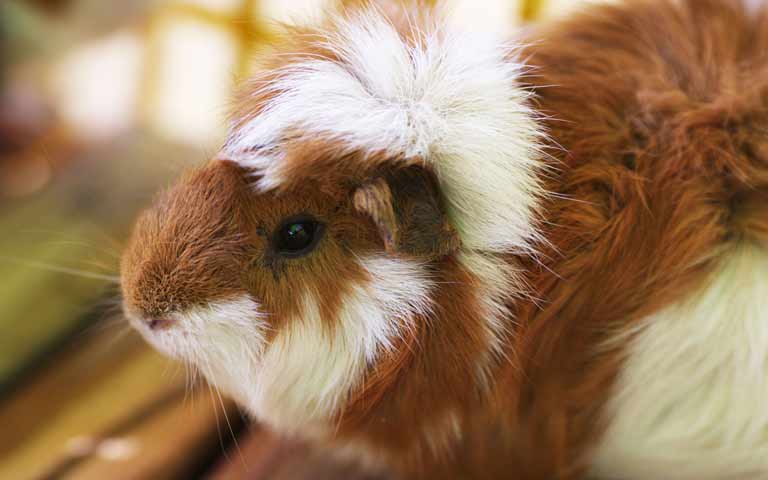
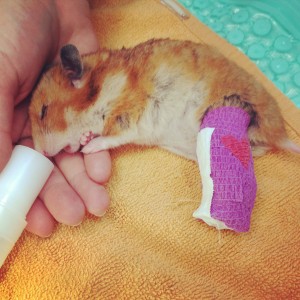
Rats are opportunistic eaters (meaning that they will eat whenever the opportunity arises) and, if improperly fed, are prone to obesity. They are also prone to chronic respiratory disease and mammary tumors. The incisors or front teeth of all rodents grow continuously throughout the pet’s life. Overgrown incisors are a reasonably common problem and can be prevented or minimized by providing the pet with gnawing opportunities such as access to pieces of wood and other chewing objects or toys. Treatment of overgrown incisors involves trimming (grinding or filing) by one of our veterinarians, often under anesthesia.

Birds
Acadia Vet Clinic is proud to be one of the few Veterinary clinics in Saskatoon that are trained to treat your pet birds. Budgies, cockatiels, parrots, and songbirds tend to live longer, healthier lives when they receive regular veterinary care. We can provide nutritional counseling, health assessments, grooming assistance, sexing, faecal parasite testing, medical and surgical services, and annual physicals. In addition, we can discuss general care, disease prevention, safety, appropriate housing and toys, and breeding.

Does my bird really need a check up?
It is common for people to have personal annual physical examinations or to take the dog and cat in once or twice yearly, so why not the bird in your family? It is most important to have any new bird examined within the first couple of days after purchase. A routine veterinary examination is recommended at least twice annually. Your veterinarian may have very important reasons to see your bird on a different schedule, so discuss it. The most important job a veterinarian has is to help ensure your pet stays as healthy as possible and hopefully never gets sick. This is called preventive medicine.
In the wild, a bird will endeavor to display a strong outward appearance even when sick. This is called “survival of the fittest.” By the time a bird actually shows an owner that it is unwell, it has likely or often been sick for some time. During the examination, the veterinarian may pick up subtle signs of disease.
What will the veterinarian do?
If possible, bring the bird in its cage so the veterinarian may assess the bird’s environment, food, feeding arrangement, and some of the droppings on the bottom of the cage. If this is the bird’s first visit to the veterinarian, then a lot of information will be gathered initially pertaining to you and, more importantly, your bird. The age, sex, species, previous background the bird may have had, diet, and length of current ownership will be recorded in the bird’s permanent medical record.
Your veterinarian may discuss or give you information regarding the proper diet and care of your particular species of bird.
The time you walked into the exam room, your veterinarian has been observing the bird in the cage. Attitude, posture, feathering, vocalizing, and physical condition are all noted before the bird is out of the cage. The bird will then be securely restrained to prevent injury to a person or pet and examined in-depth physically. Any abnormal changes in the eyes, ears, nose, mouth, skin, feathers, beak, wings, legs, nails, cloaca, chest, or abdomen will be noted.
The beak and nails may be trimmed, ground down, or groomed as necessary. Wings are clipped at this time if requested by the owner.
Finally, before the bird is released, an accurate weight in grams is recorded. With all these observations documented, a complete and current database is available to reference any time in the future to monitor changes in your pet.
Services for Your Pet Bird
Wing Clipping
Clipping a bird’s feathers can protect your bird and your home. Wing clipping is a nonpainful procedure that ensures the safety of your bird in its environment and keeps your bird from chewing holes in your doors and window frames. It limits your bird’s ability to fly, removing the risk of injury from flying into a ceiling fan, onto a hot stovetop, or into (or out) a window.
Having your bird’s feathers professionally clipped helps ensure that the right feathers are removed without irritating the skin. Improperly clipped wings can cause your bird to pluck or chew its feathers. In addition, inexperienced wing clipping can result in a blood feather being accidentally trimmed, a situation that can become life-threatening. We can perform this procedure safely while preserving the aesthetic appearance of your bird. Please feel free to call us to discuss this option, as well as any concerns you might have, or to set up an appointment.
Beak Trims
Beaks continue growing throughout birds’ lives. Although birds’ beaks usually wear evenly, some birds develop beak problems and require veterinary assistance. Trimming its beak incorrectly can cause your bird pain and may prevent it from eating, which is why we recommend having your bird’s beak professionally trimmed. Do not attempt to trim your bird’s beak at home. Call us to schedule an appointment.
Many birds need to have their nails trimmed regularly. However, the process can be detrimental to your bird if its nails are trimmed too short. We can take care of this procedure for you so that you don’t have to worry about cutting into the blood vessel inside the nails. Be careful if you perform this procedure at home. In fact, we only suggest that you attempt this at home if your bird is small and has white nails (which allow you to see the blood vessels). We also suggest you keep a caustic agent, such as styptic powder, on hand in case a nail bleeds.
Providing perches with rough surfaces can help reduce the frequency of nail trimming, but do not use sandpaper perches. They don’t wear down the nails and can cause skin problems.
For complex problems and certain emergencies we can refer you to the VMC at the WCVM where they have veterinarians that are board-certified in avian and exotic care and have equipment that is specially made for your feathered friends.
Veterinary care delivered with compassion for the pets of Saskatoon for over 35 years.
Acadia Veterinary Clinic and Pet Rehab Centre is a full-service veterinary hospital in Saskatoon, SK. We're pleased to provide compassionate veterinary care and pet rehabilitation. We want to offer the best care for your best friend!
Contact Info
Hours
Sat: 8:30am-3:00pm
Sun: Closed
Location
3421 8th Street East #4
Saskatoon, SK S7H 0W5
Click here for directions.


